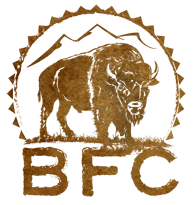For immediate release:
January 21, 2015
Contact:
Stephany Seay, Buffalo Field Campaign, 406-640-0109, This email address is being protected from spambots. You need JavaScript enabled to view it.
Yellowstone National Park, Gardiner, Basin, Montana - An estimated one hundred and one of America's last wild, migratory buffalo were crammed onto tribal stock trailers at Yellowstone National Park's Stephens Creek bison trap this morning. The bison were taken by tribal entities affiliated with the Interagency Bison Management Plan (IBMP) to tribal slaughter facilities. The two tribal affiliates shipping bison to slaughter for the second year in a row are the Confederated Salish and Kootenai Tribes and the federally chartered InterTribal Buffalo Council.
"It is unthinkable, profoundly incongruent, that Yellowstone National Park and Native Americans would participate in the brutal abuse and slaughter of the only wild population of buffalo remaining in this country," said Buffalo Field Campaign (BFC) spokeswoman Stephany Seay. "You think to yourself that this can't possibly be happening, but the shocking reality is that those who should be the fiercest champions and strongest allies for the buffalo are instead betraying them by taking the lead in the livestock industry's culture of death."
On Tuesday at least five wild buffalo were transferred from the trap to a USDA Animal & Plant Health Inspection Service facility, where they will join other captive wild buffalo being used in a highly controversial experiment with the chemical pesticide GonaCon.
An estimated 250 wild bison have been captured inside Yellowstone's trap since last Thursday. The capture number is an estimate based on counts taken at long distance by Buffalo Field Campaign volunteers. Only portions of the trap are visible from a great distance. Yellowstone initiates an extreme public access closure expanding seven miles around the Stephens Creek trap, making it nearly impossible for the public to observe government operations. Exact capture and slaughter numbers are unknown because, for the second year in a row, Yellowstone officials refuse to be open with the public about their bison operations, stating they will only give out reports every two weeks. Buffalo Field Campaign has requested media tours of the Stephens Creek trap numerous times but those requests have gone unanswered.
"I feel really disappointed with the Park Service because they are working for the wrong team and they are hiding from the public," said Maria Farinacci, volunteer with Buffalo Field Campaign. "Park Service agents work for the Park because they want to have a secure life, have a good job, probably to work with wildlife, but these individuals are making the wrong choice, doing this work for the interests of Montana's livestock industry, not for the Park or the public and certainly not for wild buffalo. The public has no voice when the Park Service does that."
Even a few miles away from the trap, Buffalo Field Campaign volunteers documenting this morning's operation were uniquely positioned to get some detailed footage and were successful in observing the buffalo as they were loaded onto stock trailers this morning, enabling us to get an very close count.
"Yellowstone can try to hide their shameful crimes, but we are on the ground in the field, always watching," said Seay. "Often this vigilance really pays off, as it did today, but that doesn't excuse Yellowstone's secrecy. Yellowstone owes it to the public they serve to fully disclose what they are doing and we will continue to press them to do so."
Yellowstone and other IBMP cohorts intend to kill at least 900 of Yellowstone's wild buffalo this year through hunting and slaughter. IBMP affiliates are no longer using the weak excuse of brucellosis to commit unjustifiable actions, but have now shifted their argument to "population control." They aim to reduce the most important bison population in the world to a mere 3,000 animals, due to the intolerance of Montana's livestock industry, intolerance that is codified in the statute: MCA 81-2-120, a law crafted by the livestock industry that needs to be repealed. The 3,000 population cap is an arbitrary number based on livestock industry politics, not on science or carrying capacity. Yellowstone's own bison carrying capacity study indicates that the Park alone can sustain upwards of 6,200 buffalo.
The Yellowstone buffalo are America’s last wild, migratory herds and the most important bison population that exists. They are the last to identify as a wildlife species and ecologically extinct throughout their native range. They’ve been added to the International Union for Conservation of Nature’s Red List for being “threatened with near extinction,” and even Montana designates the species “in greatest conservation need” with conditions “making [bison] vulnerable to global extinction.”
"Yellowstone National Park has been entrusted by the American people as stewards of this country's last wild buffalo," said David Martin, coordinator with Buffalo Field Campaign. "Stewards are supposed to protect and defend, not abuse and slaughter, so we can no longer trust them to do the right thing."
West Yellowstone and Gardiner, Montana-based Buffalo Field Campaign is a non-profit public interest organization founded in 1997 to protect the natural habitat of wild migratory buffalo and native wildlife, stop the slaughter of America’s last wild buffalo and advocate for their lasting protection, and work with people of all nations to honor the sacredness of wild bison.







